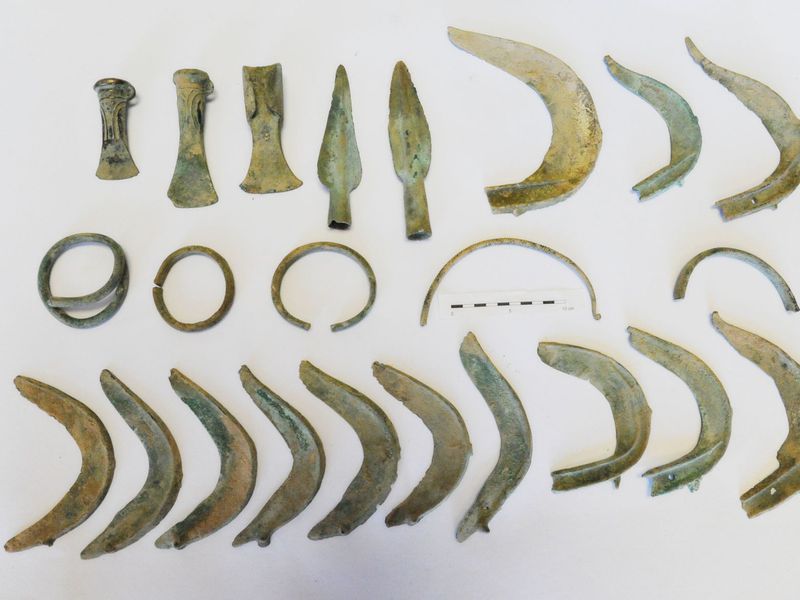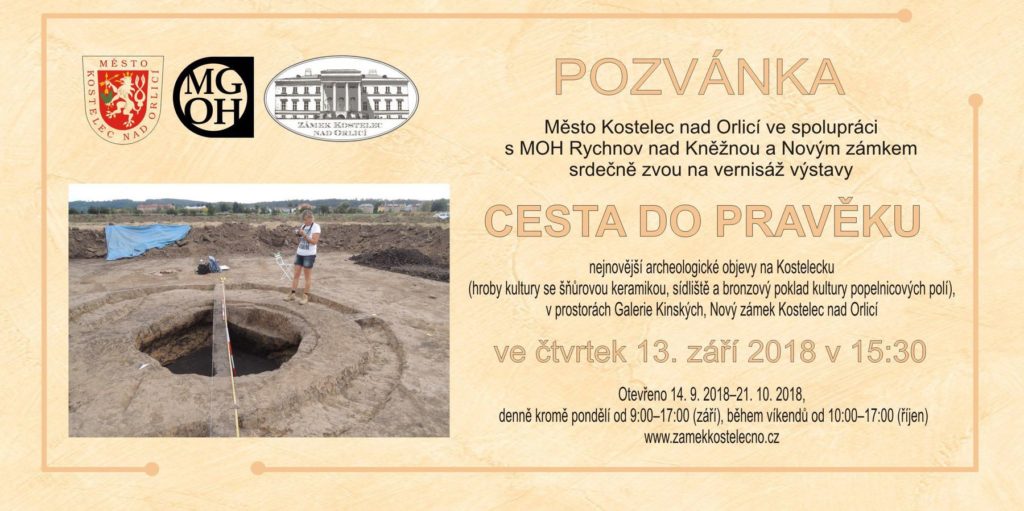Who’s a Good Archaeologist? Dog Digs Up Trove of Bronze Age Relics
Is this the world’s least likely archaeologist? A dog named Monty, who was out for a walk in the Czech village of Kostelecké Horky this past March, began excitedly digging in a field when he, miraculously, discovered a buried cache of rare Bronze Age artefacts.

The dog helped uncover 13 sickles, two spear points, three axes, and a number of bracelets, all-around 3,000 years old.
Monty’s owner, identified only as “Mr Frankota,” received a 7,860 CZK ($360) reward for turning over the artefacts, Smithsonian magazine reports.
“The fact that there are so many objects in one place is almost certainly tied to an act of honorarium, most likely a sacrifice of some sorts,” archaeologist Martina Beková, of the Museum and Gallery of Orlické Mountains in Rychnov told Radio Praha.
“What particularly surprised us was that the objects were whole, because the culture that lived here at the time normally just buried fragments, often melted as well.
These objects are beautiful, but the fact that they are complete and in good condition is of much more value to us.”
Archaeologists believe the artefacts are from the Urnfield period of the late European Bronze Age, named for the communities that were increasingly cremating their dead and burying them in urns.

The artefacts are currently on view in the town of Kostelec nad Orlicí through September 21 as part of the exhibition “Journey to the Beginning of Time.”
The ancient objects will then undergo conservation before being put on permanent display at the Kostelec palace.
Monty’s sharp nose has left the experts wondering what else might be uncovered in the area.
READ ALSO: RESEARCHERS SAY FOSSIL SHOWS HUMANS, DOGS LIVED IN C. AMERICA IN 10,000 BC
“Archaeologists have searched the surrounding fields with metal detectors,” Sylvie Velčovská, a spokesperson for the Hradec Králové Region, told Radio Praha.
Though nothing else has turned up yet, “there were some considerable changes to the surrounding terrain over the centuries, so it is possible that the deeper layers are still hiding some secrets.“





